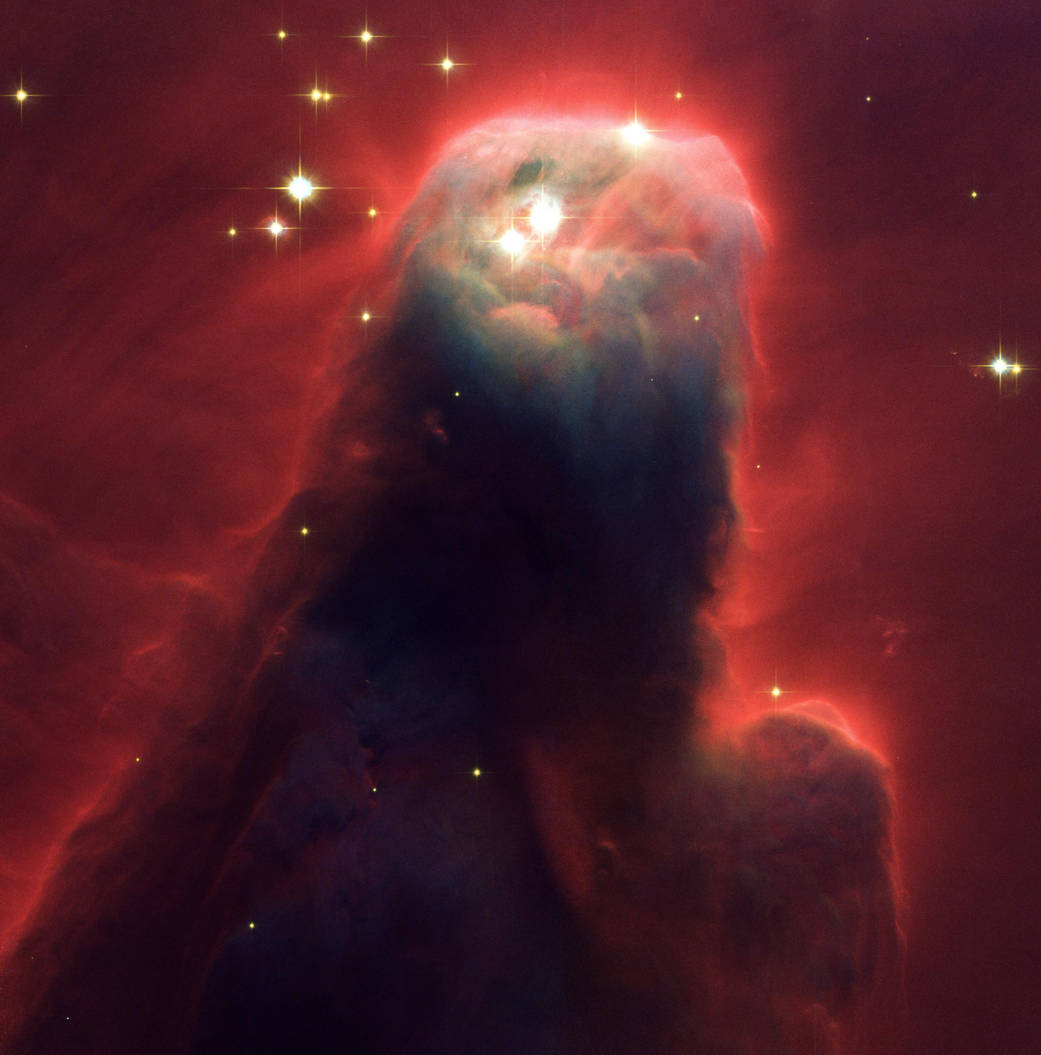Resembling a nightmarish beast rearing its head from a crimson sea, this monstrous object is actually a pillar of gas and dust. Called the Cone Nebula because of its conical shape in ground-based images, this giant pillar resides in a turbulent star-forming region. Taken by the Hubble Space Telescope in April 002, this image shows the upper 2.5 light-years of the nebula, a height that equals 23 million round trips to the moon. The entire nebula is 7 light years in length. The Cone Nebula resides 2,500 light-years away in the constellation Monoceros.
Radiation from hot, young stars has slowly eroded the nebula over millions of years. Ultraviolet light heats the edges of the dark cloud, releasing gas into the relatively empty region of surrounding space. There, additional ultraviolet radiation causes the hydrogen gas to glow, which produces the red halo of light seen around the pillar. A similar process occurs on a much smaller scale to gas surrounding a single star, forming the bow-shaped arc seen near the upper left side of the Cone. This arc is 65 times larger than the diameter of our solar system. The blue-white light from surrounding stars is reflected by dust. Background stars can be seen peeking through the evaporating tendrils of gas, while the turbulent base is pockmarked with stars reddened by dust. Over time, only the densest regions of the Cone will be left. Inside these regions, stars and planets may form.
The Cone Nebula is a cousin of the M16 pillars, which the Hubble imaged in 1995. Monstrous pillars of cold gas like the Cone and M16 are common in large regions of star birth. Astronomers believe the pillars are incubators for developing stars.Image credit: NASA, H. Ford (JHU), G. Illingworth (UCSC/LO), M. Clampin (STScI), G. Hartig (STScI), the ACS Science Team and ESA
2 min read































